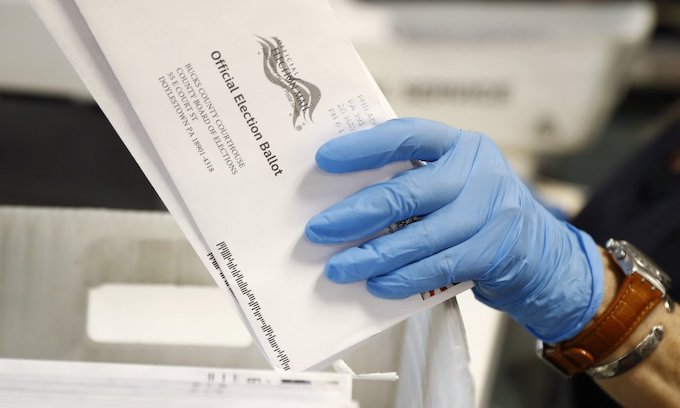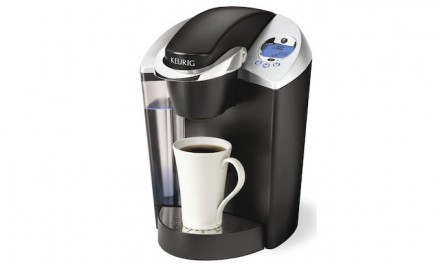New York City tried to make voting easier, and the result was chaos.
City elections officials were overwhelmed with a flood of vote-by-mail ballots, more than 400,000, or ten times the usual number in a primary. Many ballot envelopes came in without the required postmarks.
That problem may have been caused by processing errors at the post office. The envelopes provided to voters to return their ballots were postage-paid, which may have led to incorrect handling and missing postmarks.
Late Monday, a judge in Manhattan ruled that elections officials must count roughly 1,000 ballots with problem or missing postmarks in one congressional race. When the votes were counted, Rep. Carolyn Maloney narrowly defeated challenger Suraj Patel.
The results were final on August 4. The election was held on June 23.
There were several other races in New York City that dangled, unresolved, for six weeks while elections officials struggled to verify and count absentee ballots. Even when the final results were certified, city elections officials declined to release final vote totals. “The Board of Elections has preliminarily certified our race without a final vote tally,” Patel complained.
New York City’s primary is a fire bell in the night for California, where for the first time, every registered voter in the state will receive a vote-by-mail ballot beginning October 5.
The ballots will be accompanied by a postage-paid return envelope.
In recognition that the Postal Service may be overwhelmed by the volume, California lawmakers extended the period of time for returned ballots to be received and counted. Under Assembly Bill 860, rushed through the Legislature and signed by the governor on June 18, ballots received up to 17 days after the November 3 election will be accepted and counted, if valid.
What makes them valid? There’s supposed to be a postmark or official indication that the ballot was mailed or dropped off no later than November 3. There’s supposed to be a signature that matches the voter’s signature on file. And of course, there’s supposed to be a valid voter registration associated with each ballot that is counted. Errors in the voter file make this a challenge. L.A. County has sent out millions of postcards asking voters if they’re still there.
The challenge for county elections officials in this fall’s election is unprecedented. Not only do they have to send ballots and other election material to every voter, then verify and count a record number of vote-by-mail ballots, they also have to provide in-person voting locations with equipment and procedures that meet the Secretary of State’s standards for certified voting technology.
In addition, AB 860 requires counties to offer every voter the option of using a certified remote accessible vote-by-mail system. This voting technology requires counties to send a voter a personal identification number, or PIN, that allows the voter to access his or her ballot on a home computer, phone or tablet, using existing internet browsers. The ballot is “marked” online, but that information doesn’t go anywhere–the voter must print out the completed ballot and mail it back to the county elections offices, where an employee will “remake” the ballot by copying the voter’s choices onto an official ballot that will be scanned and tallied.
As of January, Secretary of State Alex Padilla has “conditionally approved” three remote access vote-by-mail systems for use in California. They are Democracy Live Secure Select 1.2.2, Five Cedars Group Alternate Format Ballot (AFB) v5.2.1 and Dominion ImageCast Remote 5.2.
Before AB 860, this technology was available to a limited number of voters who were overseas or disabled. Now any voter can request it.
So county elections officials will have to mail out a statewide total of roughly 20 million vote-by-mail ballots, and they’ll also have to staff and manage in-person polling places that are open on Election Day. In counties using the Voter’s Choice Act procedures, some polling places may be open for a total of eleven days.
Then the county elections officials will have to cope with the aftermath. “The Return of the Ballots” would make a fine title for a horror film.
The ballots will be mailed out beginning October 5, which means they’ll start coming back on October 7. They’ll continue to trickle or flood in until 17 days after November 3.
County elections workers will have to verify each vote-by-mail ballot and each provisional ballot. Remote access vote-by-mail ballots require the extra step of hand-copying the voter’s choices. All the verification and tallying has to be completed by the deadline set in law for the election results to be certified.
Then any voter has the right to request a recount, but that’s a very costly undertaking under the new system, in which ballots are not sorted by precinct but are simply scanned and then stored unsorted in boxes. A group in Long Beach is suing L.A. County Registrar of Voters Dean Logan after his office quoted a six-figure cost to retrieve and recount ballots in the March 3 city election on Measure A, a sales tax extension that passed by 16 votes. Does the excessive cost under the new system constitute a denial of the voters’ right to request a recount? It’s an issue the courts will have to decide.
The decision by Gov. Gavin Newsom and state lawmakers to send a vote-by-mail ballot to every voter in California was made in the panic over COVID-19, out of fear that crowded polling places would not be safe.
But this new experiment will be tried for the first time in an important November election, when turnout is likely to be high. Close congressional races and costly tax increases could be decided by narrow margins.
If California experiences chaos similar to what just happened in New York City, voters would have some justification for a lack of confidence that the results are accurate or legitimate.
One more election reform is needed in California. Audits and recounts are an indispensable part of the process of maintaining public confidence in our elections. Lawmakers should require counties to sort and store ballots by precincts. Whatever it costs, the price of not doing it is far higher.
Susan Shelley is an editorial writer and columnist for the Southern California News Group. [email protected]. Twitter: @Susan_Shelley
___
(c)2020 The Orange County Register (Santa Ana, Calif.)
Visit The Orange County Register (Santa Ana, Calif.) at www.ocregister.com
Distributed by Tribune Content Agency, LLC.
—-
This content is published through a licensing agreement with Acquire Media using its NewsEdge technology.

















Recent Comments